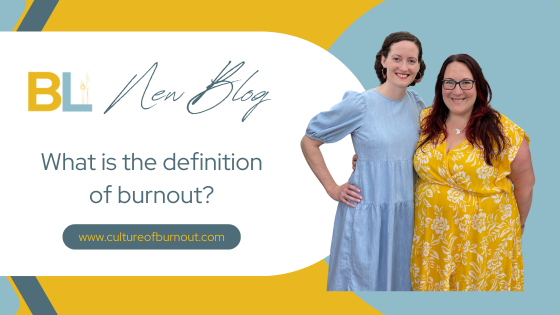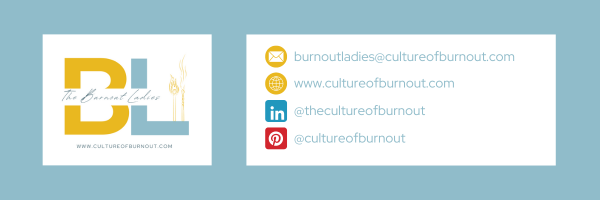
What is burnout?
For a topic that has dominated so many cultural conversations, especially since the pandemic, it is surprising to learn there is no universally agreed upon definition of burnout.
When writing our book, we knew we had to first define the problem before we could get to solutions. As big research nerds, we wanted to find what everyone was calling burnout before we wrote our own definition. We found that the most commonly used and referenced definition comes from the World Health Organization (WHO).
Way back in 2019 (can we even remember such a place?), they defined burnout as:
Burn-out an “occupational phenomenon”: International Classification of Diseases“Burn-out is a syndrome conceptualized as resulting from
chronic workplace stress that has not been successfully
managed. It is characterized by three dimensions:
1) feelings of energy depletion or exhaustion;
2) increased mental distance from one’s job, or feelings
of negativism or cynicism related to one’s job; and
3) a sense of ineffectiveness and lack of accomplishment.
Burn-out refers specifically to phenomena in the
occupational context and should not be applied to
describe experiences in other areas of life.”
Does this help us answer the question: what is burnout?
Um … yes and no. This definition tells us burnout has to do with stress and it has three main symptoms. It also tells us that burnout can only happen in the workplace. Since neither Kristen or I experienced burnout at work, this specific assertion confused us.
From our research, we know that burnout happens in different contexts for folks in different situations. For example, men and women burnout in different contexts – something that we’ll explain more another time.
So we knew that the WHO’s definition of burnout didn’t sit well with us. In our minds, this meant we had to come up with our own definition. We had to answer the question: what is burnout?
Our definition of burnout
For us, this meant we had to state what burnout is, what causes burnout, and what burnout looks like. We also knew we had to make it clear that burnout can (and does) happen outside of traditional workplace settings all the time.
Alright (drumroll, please) – The Burnout Ladies’ definition of burnout is thus:
Burnout is the mind and body’s response to being stuck in an inescapable state of high stress.
Burnout is caused by an environment that demands your time, energy and expertise without allowing for healthy stress management practices.
Burnout might look like emotional exhaustion, disconnection and cynicism, or a feeling of uselessness.
We will be spending much more time on this blog digging into burnout related stress, burnout causes, and burnout symptoms, but for now I want to leave you with a few points about our language here.
First, rather than place burnout solely within a traditional paid work environment, our definition makes it clear that burnout can happen in any environment that demands your time, energy and expertise. This means you can burnout from caregiving, volunteering, at work and at home.
Second, we use the word “might” to talk about symptoms of burnout. We spent a lot of time in our book talking about how different people are different. It was vital for us to recognize that though there are common symptoms of burnout, it can (and will) look differently for a lot of folks.
We wanted to make sure that our definition of burnout included as many different people and as many different experiences as possible. Like I said, we’ll be back on this blog to keep digging into all these juicy burnout nuggets. We can’t wait to have more productive (and hopefully healing) conversations about burnout in the coming weeks.



